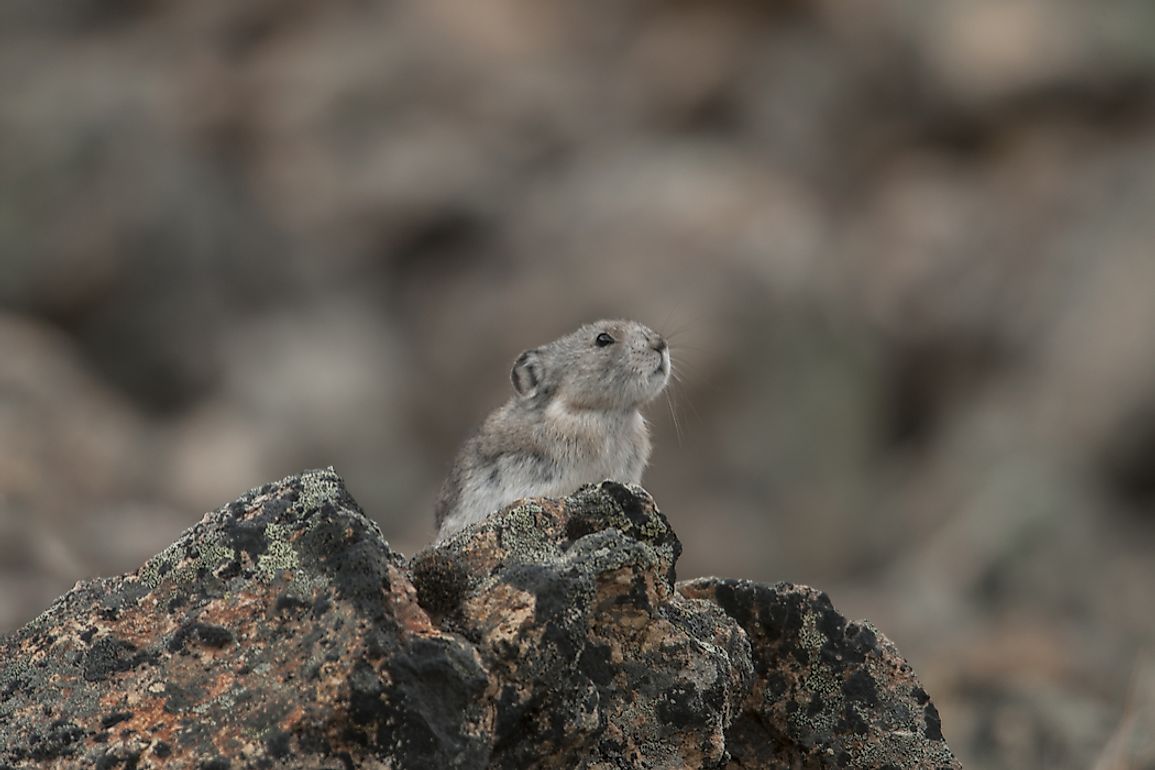Collared Pika Facts - Animals of North America

5. Physical Description
Collared pikas are rather small in size, reaching around only 5.5 ounces in adulthood, and have a concealed tail and short round ears. As compared to their front limbs, their hind limbs are somewhat larger, and they have five digits on each forefoot and four on each hindfoot. When it comes to their feet, they have hairy plantar surfaces. The skull of a collared pika is relatively flat, and it does not have a spongy auditory bullae or a supraorbital process. The ventral fur of a collared pika is creamy white, whereas the dorsal fur is a bit grayish. Their nape and shoulders have distinctive patches that form a collar, which is what affords the species the name of ‘collared’ pika.
4. Diet
In terms of their diets, collared pikas are almost pure herbivores. They are the perfect example of an ecotone species, which means their homes and shelters are typically separated from their food storage caches. Collared pikas, when active, collect a variety of vegetation during the summer months to subsist on during the wintertime. As an ochotona species, they produce two separate types of fecal pellets: either hard or soft. The soft pellets are re-consumed by collared pikas as a means of reducing the loss of the nutritional value of their food. They are also known to consume fecal pellets of other species, including ermine and hoary marmots. Although they are herbivores, they may at times consume birds in order to fulfill their protein and fat requirements when food availability is low. They may also resort to consuming lichens and other small plants in underground snow tunnels during winter if they failed to stockpile sufficient hay reserves in the summer before.
3. Habitat and Range
Collared pikas live in mountainous terrain with talus slopes and large boulders, which often presents rock slides. They prefer living along the borders of talus slopes that have meadows and patches of high-quality vegetation in the immediate vicinity. Collared pikas will at times also inhabit areas near sea level in British Columbia and Alaska. More typically, however, they are found in the mountainous regions of central and southeastern Alaska, from the Richardson Mountains north of the Arctic circle in the Yukon, west of the Mackenzie River in the Northwest Territories, and southward into northwestern British Columbia. They may also be found in the Yukon-Tanana Uplands and the Chigmit Mountains as well.
2. Behavior
Although collared pikas belong to the Ochotonidae species, unlike many other of that group they do not burrow. Instead, they are known to take shelter within their talus habitats. They have been characterized as being asocial, and as such are extremely defensive of their territories. In fact, they are often found chasing away intruders. Although they are at times seen in pairs, they are mainly solitary creatures. They are known to spend much of their day grazing and collecting vegetation for their winter caches. Collared pikas do not hibernate during the winter, and they are diurnal. They are also kleptoparasitic, which means that they steal food from one another.
1. Reproduction
Collared pikas will typically mate with their nearest neighbors of the opposite sex. They are characterized as being facultatively monogamous, which means males will not access multiple females due to not being able to control large enough spans of territory to do so. The Collared pika breeding season reaches its peak in May and early June. Females are known to deliver two litters a year, with 2 to 6 young ones being born in each litter. Gestation lasts between 3 and 4 weeks. Collared pikas grow rapidly from birth, reaching their mature adult sizes within about 50 days.











